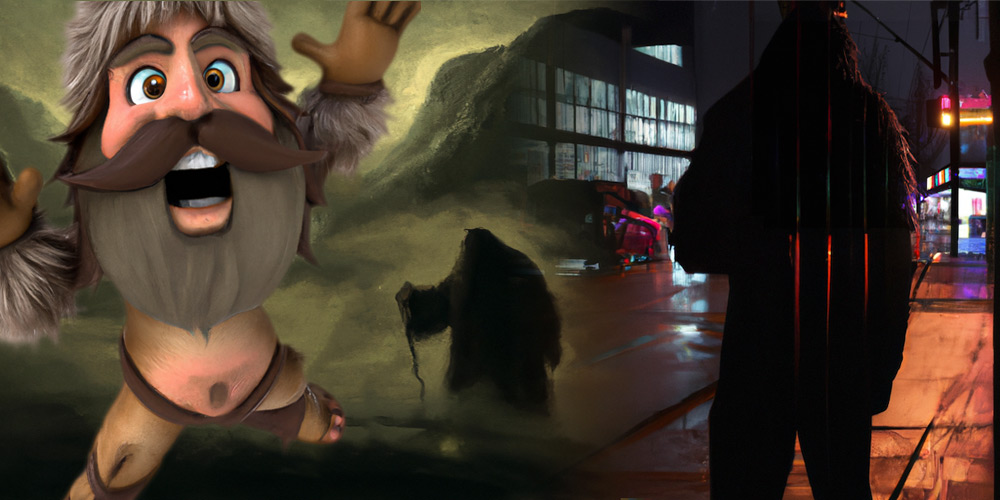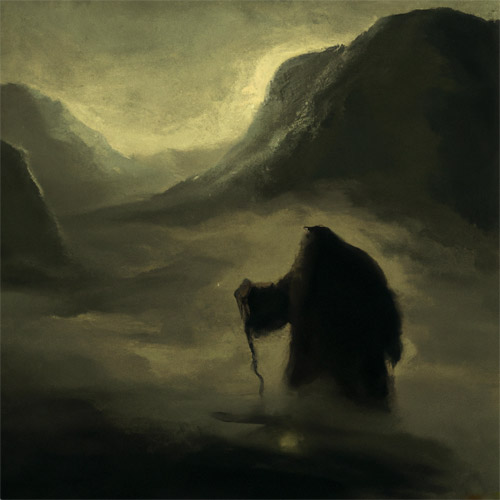
In popular culture, every mention of “Sasquatch” or “Bigfoot” can be traced back to an act of theft.
An Indian agent, J.W. Burns, took the Sasquatch story from the Coast Salish people, put his name on it, and submitted it to Maclean’s magazine in 1929, where it ran under the headline “Introducing B.C.’s Hairy Giants.”
Nearly a century later, in 2017, a former editor of Maclean’s, Ken Whyte, sparked a scandal when he and other Canadian media figures proposed the creation of an “Appropriation Prize,” a mocking way to honour writers who steal the most shamelessly from other cultures.
For years, Robert Jago used the story of Sasquatch as his go-to explainer for what appropriation was all about and why it does, in fact, carry real consequences for those from whom the culture has been stolen. And for this week’s episode of CANADALAND, the writer from Kwantlen First Nation originally set out to examine how Maclean’s was responsible for a travesty.
But in speaking to Salish writers and leaders, he reached a different, counterintutive conclusion about cultural appropriation — and why the story of Sasquatch offers evidence of its potential value:
Below are some passages from the episode:

“Do hairy giants inhabit the mountain solitudes of British Columbia? Many Indians…are sincerely convinced that the ‘Sasquatch,’ a few of them at least, still live in the little-known interior of the province.” — J.W. Burns in Maclean’s, 1929
“Burns took Sts’ailes masks, told the story in Maclean’s, and toured the country for profit — and the Sts’ailes played along. Why? Because the Canada of the 1930s was virtually Stalinist in its treatment of Indigenous peoples. No freedom of movement, no freedom of speech, no freedom to choose what job you wanted to do. No freedom of mobility. The residential school systems were at their deadliest worst, and on top of that, it was illegal to practice your faith and your culture. But when it came to Sasquatch, an exception was made. The Sts’ailes, in effect, appropriated appropriation.” — Robert Jago
“I do a lot of welcome ceremonies and greetings to the people, we come here on Canada Day and all of those things…It’s not tokenism. I’m not coming here to do a performance. I’m coming here to do ceremony. I’m coming here to use my breath and to share something that comes from my sacred inheritance.” — Kelsey Charlie, a councillor for the Sts’ailes First Nation, who participates in the Sasquatch Days festival in the nearby Village of Harrison Hot Springs, which has taken place in one form or another since the 1930s

“I believe writers should be free to write about whoever they want to write about. My hope is that they do it with respect and their heart’s in the right place. There is straight-up exploitation, which I’m not a fan of, and I don’t agree with that. And I’m hoping that if you are gonna try to write about another culture, that you do your due diligence and you do your homework and it’s coming from a place of honour and respect.” — Max Brooks, author of the novels World War Z and Devolution: A Firsthand Account of the Rainier Sasquatch Massacre
“The most egregious kinds of cultural appropriation, which is the sort of thing that I think even I would be convinced to denounce — I mean, I don’t think it should be illegal, but it rubs me the wrong way — it’s when you have, like, a white novelist or a film director who passes through a particular region and he hears some garbled version of folklore that relates to, say, a nearby Indigenous community. And then the person thinks, ‘Oh wow, that would make a great subject for a novel or a TV show’ or whatever. And then that person makes a ton of money based on a garbled version of somebody else’s folklore without ever really consulting that group, let alone letting them share in the creative process or financial remuneration.” — Jonathan Kay, editor at Quillette, who departed his post at the top of The Walrus‘s masthead following his involvement in the “Appropriation Prize” controversy

“He goes out at night and walks / slowly. They say he fell from / the sky several decades ago / but now he is a fully grown sasquatch. In the winter / the poor souls gather / round him for warmth / and he hugs them one by one.” — The opening of “Street Healer 1” by Joseph Dandurand, a poet and playwright and manager of the Kwantlen Cultural Centre, whose poems envision Sasquatch as a man in Vancouver’s Downtown Eastside
“It is not our way to try and possess something like the truth, not exclusively. The truth as we know it, as Native people, is everyone’s truth. It’s just that, because we’ve been here so long, we know more of it — at least about here. And that’s a fact that non-Indigenous people need to accept, especially as they move further into our spaces, whether physical, moral, or cultural.” — Robert Jago